Trade names Nembutal MedlinePlus a682416 Molar mass 226.27 g/mol | AHFS/Drugs.com Monograph License data US FDA: Pentobarbital CAS ID 76-74-4 | |
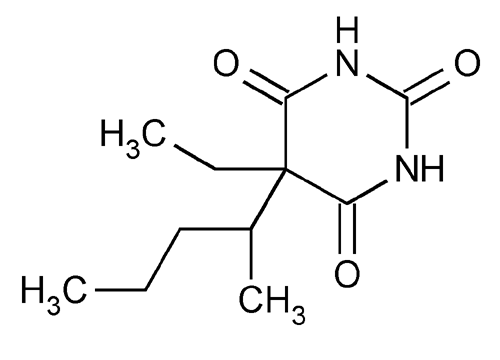 | ||
Pregnancycategory AU: CUS: D (Evidence of risk) Routes ofadministration By mouth, IV, IM, rectal; also intraperitoneal & intracardiac (for animal euthanasia) | ||
Pentobarbital (US English) or pentobarbitone (UK English) is a short-acting barbiturate. Pentobarbital can occur as both a free acid and as salts of elements such as sodium and calcium. The free acid is only slightly soluble in water and ethanol.
Contents
- Pentobarbital farmacologia i
- Medical
- Euthanasia
- Execution
- Metabolism
- Drug interactions
- Chemistry
- References
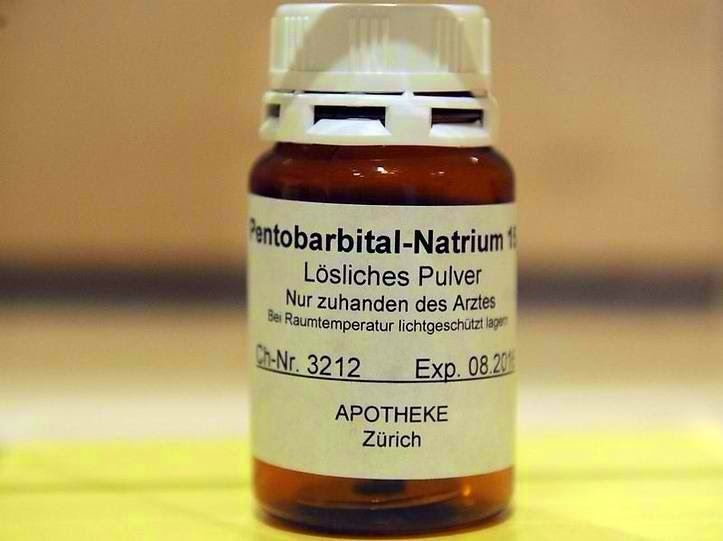
One brand name for this drug is Nembutal, coined by John S. Lundy, who started using it in 1930, from the structural formula of the sodium salt—Na (sodium) + ethyl + methyl + butyl + al (common suffix for barbiturates). Nembutal is trademarked and manufactured by the Danish pharmaceutical company Lundbeck, and is the only injectable form of pentobarbital approved for sale in the United States.
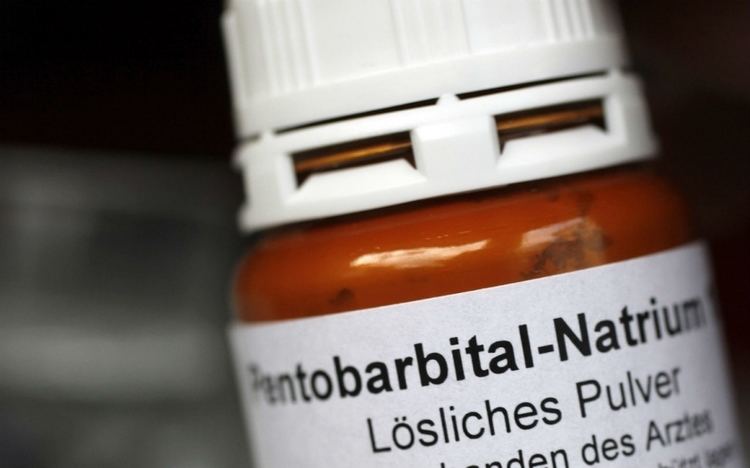
In high doses, pentobarbital causes death by respiratory arrest. In the United States, the drug has been used for executions of convicted criminals. Lundbeck (one of many manufacturers) does not permit its sale to prisons or corrections departments to carry out the death penalty.
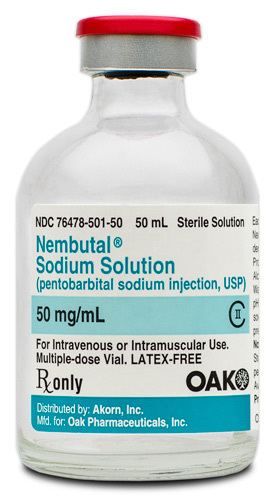
Pentobarbital farmacologia i
Medical
Typical applications for pentobarbital are sedative, hypnotic for short term, preanesthetic and control of convulsions in emergencies.
It is also used as a veterinary anesthetic agent.
Pentobarbital also has an application in reducing intracranial pressure in Reye's syndrome, traumatic brain injury and induction of coma in cerebral ischemia patients. Pentobarbital-induced coma has been advocated in patients with acute liver failure refractory to mannitol.
Euthanasia
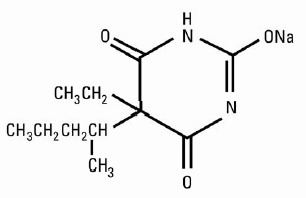
Pentobarbital can induce death when used in high doses. It is used for euthanasia for humans as well as nonhumans. It is also used by itself, or in combination with complementary agents such as phenytoin, in commercial animal euthanasia injectable solutions.
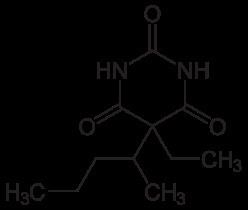
In the Netherlands, the standard protocol for physician-assisted suicide is intravenously induced thiopental anesthesia, followed by bromide of alcuronium- or pancuronium-induced respiratory arrest. A concentrated oral solution of 100 mL containing 9 grams of pentobarbital sodium along with sugar syrup in a 20% ethanol solution is a standard solution used for self-administration by patient.
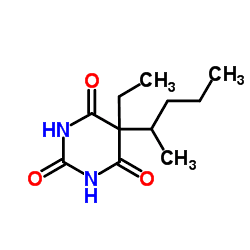
The oral dosage of pentobarbital indicated for physician-assisted death in the United States states of Oregon, Washington, Vermont, and California (as of January, 2016) is typically 10 g in liquid form. This is considerably higher than the dose for the management of status epilepticus.
Execution
Pentobarbital has been used or considered as a substitute for other drugs traditionally used for capital punishment in the United States when they are in short supply. Such use however is illegal under Danish law, and when this was discovered, after public outcry in Danish media, Lundbeck, the owner of the drug, stopped selling it to US states that practice the death penalty. US distributors of the drug are forbidden by the owner to sell it to any customers, such as several state authorities, that practice or participate in executions of humans.
Texas began using pentobarbital for executing death-row inmates by lethal injection on July 18, 2012. The use of pentobarbital has been considered by several states, including Ohio, Arizona, Idaho, and Washington; those states made the decision to switch following shortages of pancuronium bromide, a muscle relaxant previously used as one component in a three-drug cocktail.
In October 2013, Missouri changed its protocols to allow for a compounded pentobarbital to be used in a lethal dose for executions. On November 20, 2013, Joseph Paul Franklin was executed by the state of Missouri. He was the first inmate executed in three years in the state and the first to die by a single dose of pentobarbital.
Metabolism
Pentobarbital undergoes first-pass metabolism in the liver and possibly the intestines.
Drug interactions
Administration of ethanol, benzodiazepines, opioids, antihistamines, other sedative-hypnotics, and other central nervous system depressants will cause possible additive effects.
Chemistry
Pentobarbital is synthesized by methods analogous to that of amobarbital, the only difference being that the alkylation of α-ethylmalonic ester is carried out with 2-bromopentane (not 1-bromo-3-methylbutane) to give pentobarbital.
